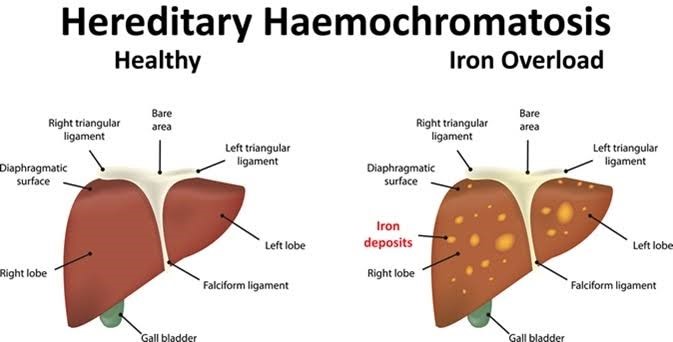
Hemochromatosis

11.10.2023
Hemochromatosis , Daily Current Affairs , RACE IAS : Best IAS Coaching in Lucknow
|
For Prelims: About Hemochromatosis, For Mains GS paper 3:Forms of hemochromatosis,Treatment,Other risk factors |
Why in the news?
Recently,Health experts gave information about Hemochromatosis or ‘bronze diabetes’, the rare genetic disorder that causes organ dysfunction.
About Hemochromatosis
- It is a rare genetic disorder that threatens the health of affected individuals by causing iron overload, which can lead to severe organ dysfunction.
- This health condition is primarily classified into two types: hereditary hemochromatosis and secondary hemochromatosis.
- Hereditary hemochromatosis is a genetic disorder driven by a mutation in the HFE gene, resulting in individuals being homozygous for the C282Y variant.
- This genetic anomaly sets the stage for a lifelong struggle with excessive iron absorption within the intestines.
- Unlike the body's natural ability to regulate iron intake based on its needs, individuals with hereditary hemochromatosis have a relentless and indiscriminate iron absorption mechanism, leading to a gradual buildup of iron in their system.
- Over time, this iron overload becomes a bomb for multiple organs.”
- Symptoms of haemochromatosis usually start between the ages of 30 and 60.
- Common symptoms include: Feeling very tired all the time (fatigue), weight loss, weakness and joint pain etc
Treatment:
- Phlebotomy is the standard treatment for primary hemochromatosis.
- Iron toxicity can be reduced by removing red blood cells, the body's main mobilizer of iron.
- Phlebotomy is usually performed once or twice a week.
The two forms of hemochromatosis are primary and secondary.
Primary hemochromatosis
- Primary hemochromatosis, also known as hereditary hemochromatosis, usually results from genetic factors.
- The HFE gene, or hemochromatosis gene, controls how much iron you absorb from food. It lives on the short arm of chromosome 6. The two most common mutations of this gene are C28Y and H63D.
Secondary hemochromatosis
- Secondary hemochromatosis occurs when a buildup of iron stems from another medical condition, such as erythropoietic hemochromatosis. In this disease, the red blood cells release too much iron into the body because they are too fragile.
Other risk factors for secondary hemochromatosis include:
- alcohol dependency
- a family history of diabetes, heart disease, or liver disease
- taking iron or vitamin C supplements, which can increase the amount of iron the body absorbs
- frequent blood transfusions
Source:Hindustan times